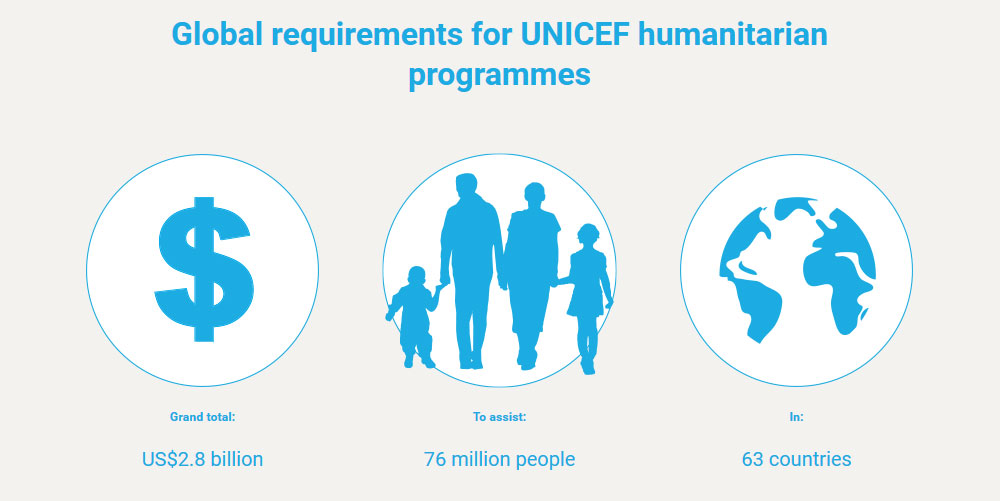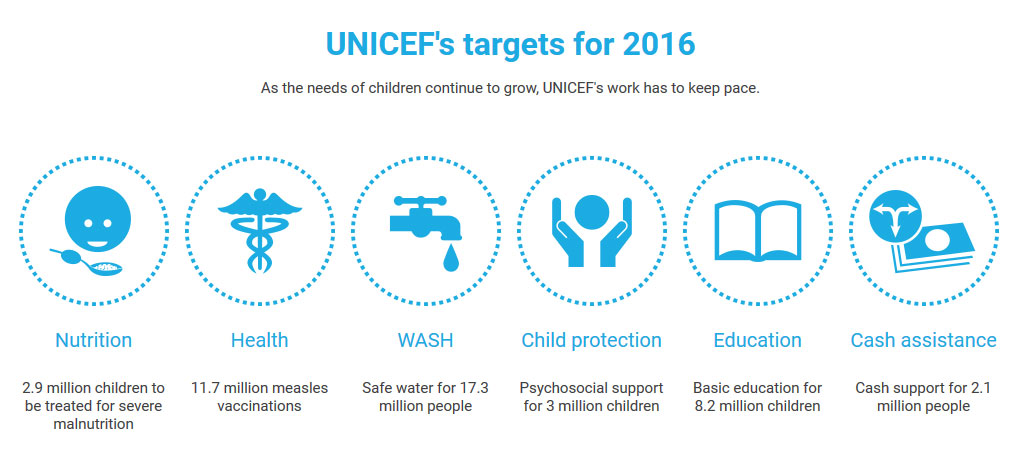UNICEF launches $2.8 billion humanitarian appeal for children
“Millions of children are being robbed of their education,” said Afshan Khan, UNICEF’s Director of Emergency Programmes, in a press release.
“Education is a life-saving measure for children, providing them with the opportunity to learn and play, amidst the carnage of gunfire and grenades,” she continued. “This year, a quarter of our appeal is devoted to education. By educating the minds of children and young people we are building hope so they can envisage a better future for themselves, their families and their societies and help break the cycle of chronic crisis.”
The agency says it plans to dramatically increase the number of children in crises who are given access to education – from 4.9 million at the beginning of 2015 to 8.2 million in 2016. More than half – five million – will be Syrian children inside the country or in neighbouring countries.
Noting that its Humanitarian Action for Children 2016 has doubled since this time three years ago, UNICEF is warning that the twin drivers of conflict and extreme weather are forcing growing numbers of children from their homes and exposing millions more to severe food shortages, violence, disease, abuse, as well as threats to their education.
According to UN estimates, around one in nine of the world’s children is now living in conflict zones. In 2015, children living in countries and areas affected by conflict were twice as likely to die of mostly preventable causes before they reached the age of five, than those in other countries.
Meanwhile, climate change is a growing threat, with UNICEF estimating that over half a billion children live in extremely high flood occurrence zones and nearly 160 million live in high or extremely high drought severity zones. One of the strongest El Niño weather events on record poses further risk.
The number of people forced from their homes also continues to grow, with Europe alone receiving more than one million refugees and migrants in 2015.
“In the past few months I have seen with my own eyes children pushed beyond the boundaries of human suffering in Burundi, northeast Nigeria and along the migrant and refugee route in Europe,” says Ms. Khan.
“Across the world, millions of children have been forced to flee their homes due to violence and conflict. The global refugee crisis is also a protection crisis for children on the move, who are at increased risk of abuse, exploitation and trafficking,” she added.
UNICEF’s 2016 appeal targets a total of 76 million people, in 63 countries. In 2015, the agency reached millions of children with humanitarian aid – including providing 22.6 million people with access to safe water, vaccinating 11.3 million children against measles, treating two million children for the most serious form of malnutrition, offering two million children vital psychological support and giving four million children access to basic education.




